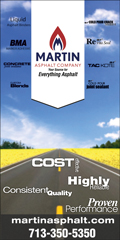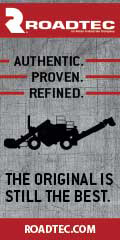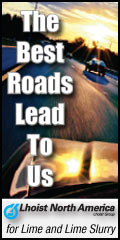| Tuesday, May 31, 2016 | ||
 |
 |
 |
| Past Issues | www.texasasphalt.org | Printer-Friendly | Subscribe | Advertise |
Environmental, Health and Safety Brief for June
Safety
OSHA’s General Industry final rule on preventing slips, trips and falls is scheduled for publication in August 2016. The agency has targeted the final rule on "Walking Working Surfaces and Personal Fall Protection Systems" as a priority before President Barack Obama leaves office. The rule would revise existing walking/working surfaces standards by including new technology and methods intended to help reduce fall-related deaths and injuries. More Area of Impact to TXAPA Members Includes:
-Hot Mix Plants
-Shops
-Equipment Yards
Link to the proposed rule: https://www.gpo.gov/fdsys/pkg/FR-2010-05-24/pdf/2010-10418.pdf#page=1
More information on the final rule will follow as it becomes available.
Environmental
A final reminder: Toxic Release Inventory Reporting (TRI) – Time to start collecting data for TRI reports to the TCEQ on or before July 1, 2016 for year 2015. Refer to the March EHS Briefs issue from TXAPA.
Link to information on TRI Reporting; https://www.epa.gov/toxics-release-inventory-tri-program/tri-threshold-screening-tool?_ga=1.260457997.1622065116.1432185014
Again...as noted in past issues of the EHS Brief...the Texas Commission on Environmental Quality (TCEQ) will re-issue the Storm Water General Permit on August 14th. All current TXR05 permits will have to be renewed. More to come on this topic in the next few months.
Health
It’s time for environment, health, and safety (EHS) managers to add another task to a seemingly endless list of everyday duties. The Zika virus has been identified as a workplace hazard, and it is incumbent upon employers to protect their workers from contracting the virus. Here are some steps you can take to keep the Zika virus from infecting your workplace and at home.
Step 1: Provide insect repellents, and encourage their proper use.
Step 2: Provide workers with, and encourage them to wear, clothing that covers their hands, arms, legs, and other exposed skin. Consider providing workers with hats with mosquito netting to protect the face and neck.
Step 3: In warm weather, encourage those working or playing outdoors to wear lightweight, loose-fitting clothing. This type of clothing protects them against the sun’s harmful rays and provides a barrier to mosquitoes.
Step 4: Provide adequate water, rest, and shade, and monitor workers for signs and symptoms of heat illness.
Step 5: Get rid of sources of standing water (e.g., tires, buckets, cans, bottles, barrels) whenever possible to reduce or eliminate mosquito breeding areas. Train workers about the importance of eliminating areas where mosquitos can breed at the worksite.
|
Asphalt: Smooth | Durable | Quiet | Safe



